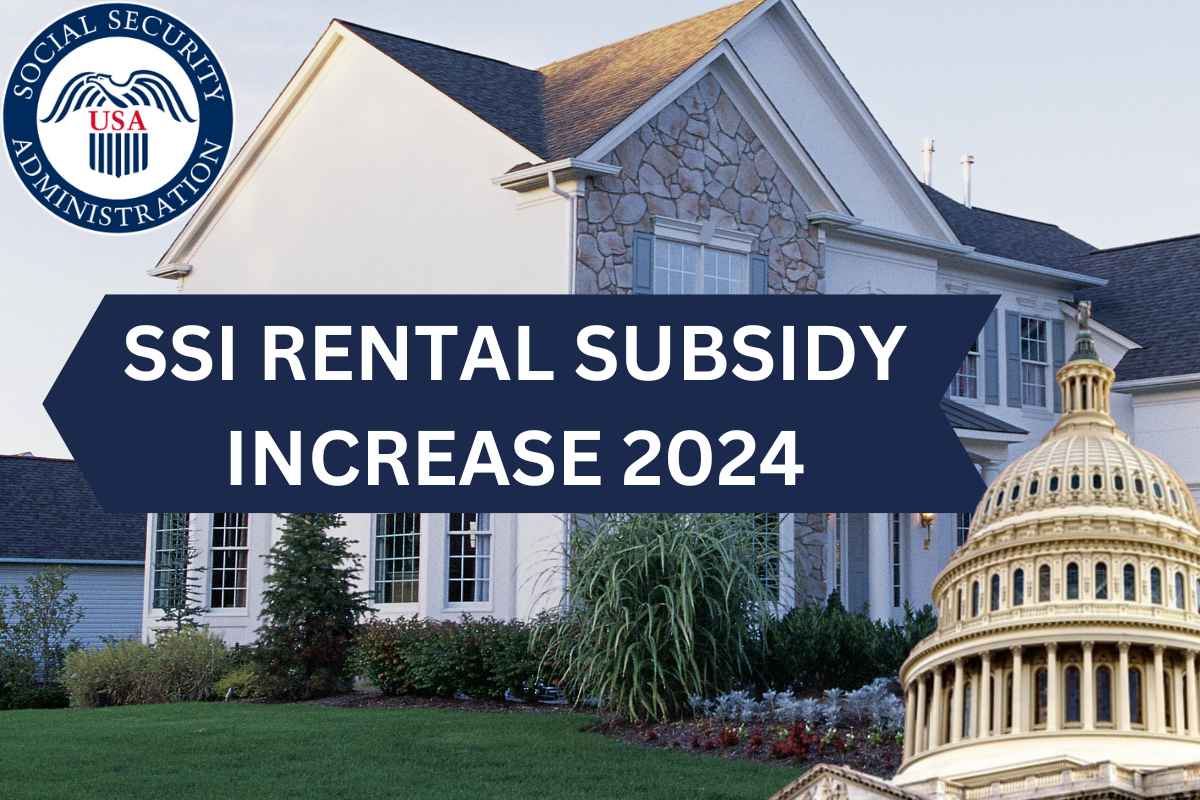In a significant development, the Social Security Administration (SSA) has announced a pivotal update to its Supplemental Security Income (SSI) eligibility criteria, which is set to put more money into the pockets of many Americans.
The SSA’s latest adjustment, which involves the expansion of its rental subsidy policy, marks a major step in enhancing the financial support for adults and children with disabilities, the blind, and seniors with restricted incomes.

Understanding the Impact of the New SSI Rental Subsidy Policy
Historically, SSI has been a critical source of income for those who struggle to meet their basic needs through traditional Social Security benefits. As of January 2023, approximately 7.4 million individuals received SSI, with an average monthly payment of $654.
This payment is crucial for many recipients, particularly those who also rely on Old-Age, Survivors, and Disability Insurance (OASDI) payments.
The revised rental subsidy rules aim to make renting at a discounted rate less likely to interfere with SSI eligibility or reduce the payment amounts. This change, already in effect in seven states due to local judicial rulings, will extend to all 50 states by September 30, 2024.
While the maximum monthly payment from the government will remain at $943 in 2024, the adjustment is expected to boost payment amounts for current recipients and broaden eligibility for potential new claimants.
Social Security update expands benefits nationwide https://t.co/r1lieTGDDd
— Newsweek (@Newsweek) April 18, 2024
Nationwide Expansion of Social Security: From Local Decisions to Federal Policy
The decision to expand the rental subsidy policy nationwide follows successful implementations in states like Connecticut, Illinois, Indiana, New York, Texas, Vermont, and Wisconsin.
These adjustments stem from local court decisions that have set a precedent, influencing the SSA’s policy at a national level.

Martin O’Malley, the Commissioner of Social Security, emphasized the commitment of the SSA to simplifying access to vital benefits.
“Simplifying and expanding our rental subsidy policy nationwide is another common-sense solution that will improve program equality and reduce agency time spent on calculating and administering rental subsidies,” said O’Malley.
This shift not only aims to streamline the process but also address the longstanding issue of payment variability and errors, a frequent complaint among recipients.
Recent Changes and Future Prospects
The adjustment to the rental subsidy policy in the Social Security is the latest in a series of modifications the SSA has made to the SSI program.
Earlier in February, the SSA also revised its In-Kind Support and Maintenance policies, deciding not to count informal food assistance received from community networks in its calculations. This change is expected to lessen the reporting burden on applicants and diminish month-to-month payment discrepancies.

As the SSA continues to refine its approach, the overarching goal remains to ensure that all eligible individuals can easily access and benefit from these programs without undue hardship or bureaucratic delays.
These enhancements in Social Security are designed to bring about a fairer, more equitable system that better serves the needs of America’s most vulnerable populations.
Looking Ahead
With these updates, the SSA is taking significant strides toward improving the effectiveness and fairness of its social safety net programs. As these changes unfold, they promise not only to alleviate financial stress for many but also to foster a more inclusive and supportive system for those in need.
This progressive approach is a beacon of hope for millions of Americans, assuring them of the government’s support with the social security benefits in their times of need.










